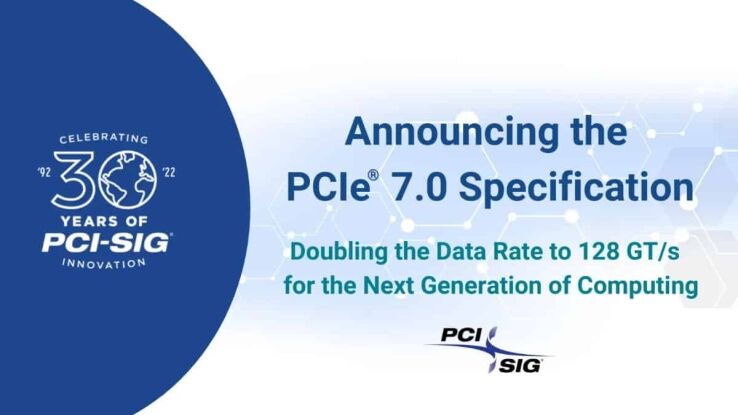PCI-SIG announce the next PCIe 7.0 specification
More and more speed expected every three years

WePC is reader-supported. When you buy through links on our site, we may earn an affiliate commission. Prices subject to change. Learn more
PCI-SIG is the Peripheral Component Interconnect Special Interest Group and is responsible for specifying the PCI, PCI-X, and PCIe interfaces. Now on its 30th anniversary, PCI-SIG has announced the PCIe 7.0 specification. Starting in 1992 it began to help computer manufacturers implement the new Intel specification. But since then has become a non-profit organization to keep providing the latest tech to its members.
The board of directors of the PCI-SIG hosts’ representatives from key members that utilize the feature. These include AMD, ARM, Dell, IBM, Intel, Synopsys, Keysight, Nvidia, and Qualcomm. The group aims to keep doubling the throughput of the specification every three years. And so we expect to see PCIe 7.0 released in 2025, with the most recent release PCIe 6.0 released in January of 2022. Although it usually takes time for graphics cards to adopt the standard it does give a bit of planning ahead of time.
PCIe 7.0 specification
For the 2025 release of the PCIe 7.0 spec, PCI-SIG has a few feature goals. It plans to deliver a 128 GT/s bit rate and up to 512 GB/s bi-directionally on an x16 slot. Which is doubling for the 64 GT/s of PCIe 6.0 and a 121 GB/s throughput on x16. It also confirms the utilization of PAM4 signaling. This is pulse amplitude modulation with four levels, which moved to PCIe 6.0 from NRZ previously (non-return-to-zero). Essentially moving from binary one and zero voltage to a sine wave based on amplitude.
Furthermore, it aims to focus on channel parameters and reach. As well as continue to deliver low-latency and high-reliability targets. As well as improving power efficiency, an important fact if the TDPs of graphics cards keep increasing. But also maintaining backward compatibility with all previous generations of PCIe.
This PCIe 7.0 specification aims to support emerging applications. Although we may know it as the interconnect for a motherboard with add-in cards there are some more uses than the regular consumer. Helping the likes of 800 G ethernet, AI/ML, Cloud and Quantum Computing, and data-intensive markets. These can be Hyperscale Data Centers, High-Performance Computing, and Military/Aerospace. Utilizing much higher bandwidths available with the larger computing power.